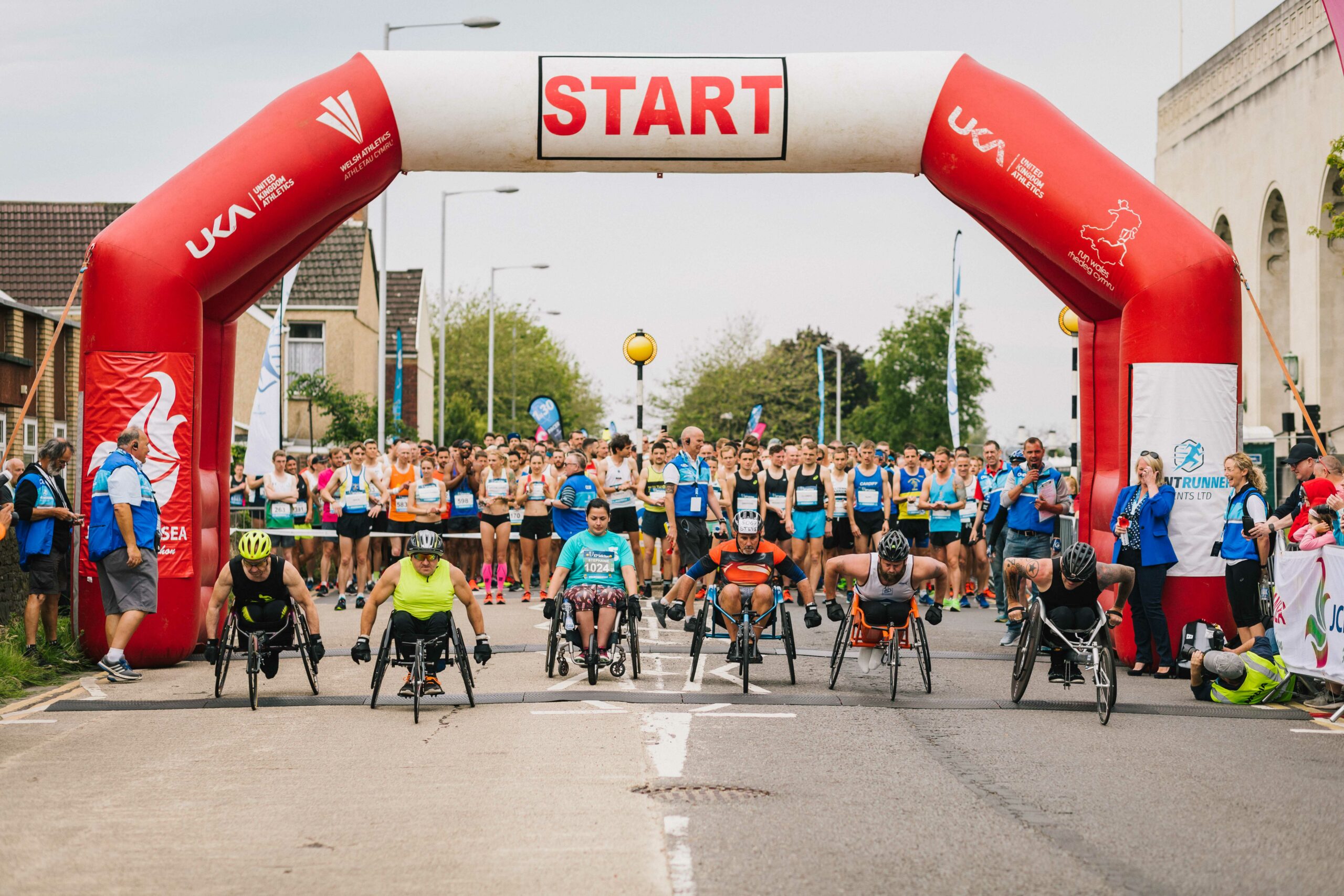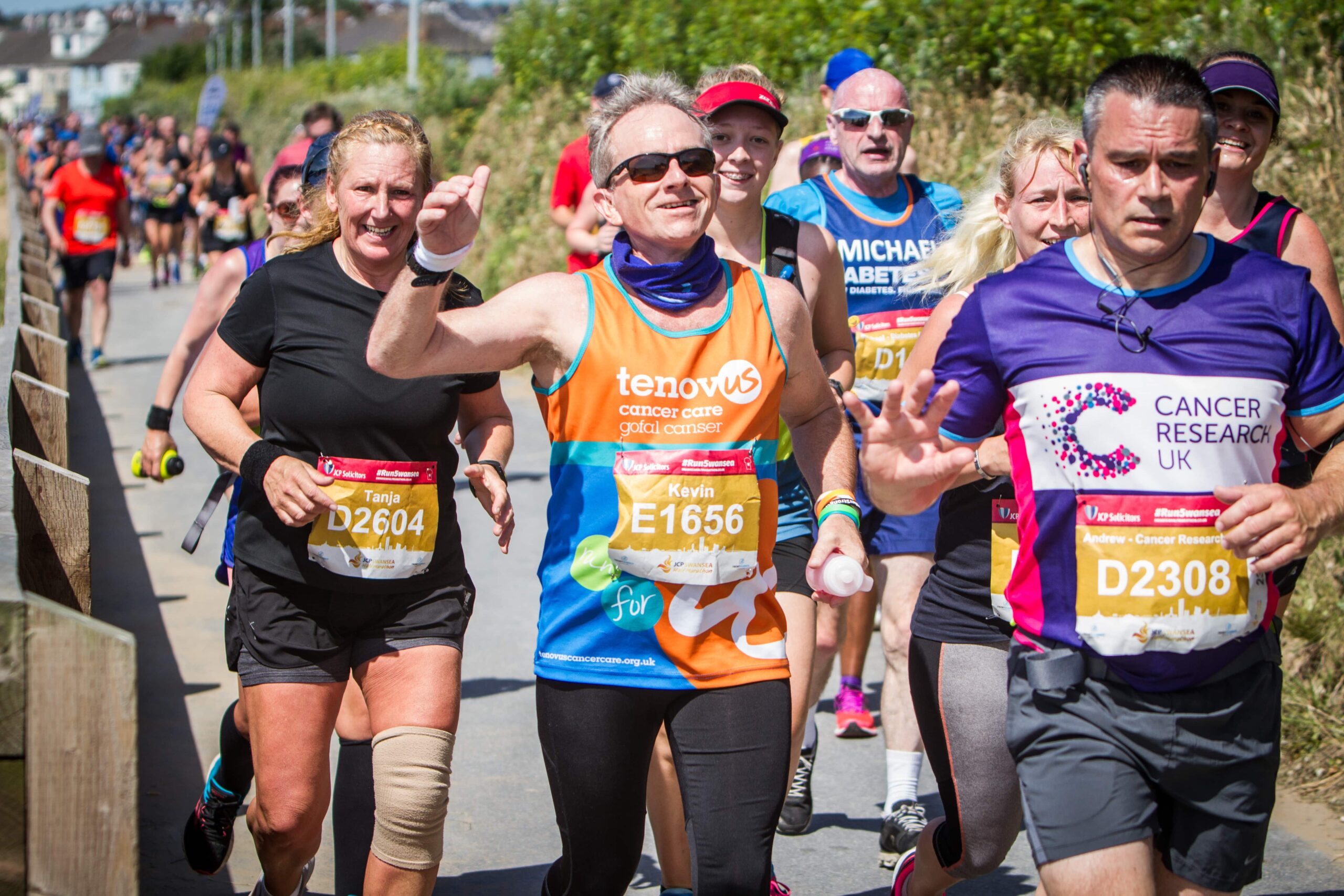With Winter just around the corner, organisers of Wales’ multi-award winning half marathon are ready to help runners get smart and fit for the colder months ahead.
David Martin-Jewell, Race Director of the JCP Swansea Half Marathon says:
“Winter training is an important part of being a runner and keeping up the required levels of fitness to continue taking part in races throughout the year. There are lots of runners who dread the colder temperatures and shorter hours of daylight but getting out in the fresh air during autumn and winter is good for the mind, body and spirit. There are lots of ways to combat the winter fatigue and hopefully these tips will encourage everyone to keep up the training or even take up running if you haven’t run before…”
What to wear
It’s cold, wet and dark, what do you wear to run comfortably in these conditions? 
Cold – Layer up with a few light layers, if you get too warm you can take them off and tie them around your waist and put accessories such as gloves/hats into your pockets.
Base layers, long sleeve tops & full-length tights are a must when it’s cold. Important accessories are gloves, head buffs, beanie hat and thicker socks. If you’re not running from home take jogging bottoms and a hoody to leave in the car, something warm to put on while you stretch off.
Wet – A waterproof running jacket will help to keep you dry and in turn will keep you comfortable and warm whilst you get your miles in.
A running cap/visor will be useful to keep rain out of your eyes and a wrist buff or sweatbands are always handy to wipe your eyes. If you aren’t running from home then always have a towel and dry clothes in the car for afterwards. There’s nothing worse than driving home wet and you will get cold quickly.
Dark – If you’re running early in the morning or late in the evening, then a high visibility jacket, vest or similar clothing is essential to make sure you’re seen.
A headtorch is also useful during the darker hours, whilst there may be routes without sufficient street lighting, you may need more than hi-viz clothing to stay safe! Head torches help you see where you’re going but more importantly – they help other road users and vehicles see you. Running in the evening? Even if it’s light when you start, chances are it will get dark during your run – always take high viz & head torch with you.
Hydration
It may be cold and wet outside but hydration is still key before, during and after your training runs.
Even when it is cold and wet you will still sweat, and you will still need to take on plenty of fluid to replace the water your body loses through perspiration. Take a small water bottle with you if it’s a long run, if the run is shorter you can either take a bottle with you or have one ready for immediately after you finish.
During the winter months, not only is it colder but it is darker, try not to run on your own, safety in numbers!
Buddying up is recommended no matter what time of year it is, however, winter conditions can make it more dangerous to be out running alone. Running with a friend will also make for a more enjoyable and productive run as you can encourage and push each other when you get tired.
If you must run on your own – take a phone, let someone know your route & how long you expect to be out for.
If you don’t have anyone to run with, why not join a local running club? There are plenty of local clubs that cater for all abilities. Join in on a session and see how it goes, you will improve your running, training will become easier and you will make new friends all at the same time.
Plan your week
There are many things that can come between you and your run – work and family are the main struggles but sometimes it can be as simple as looking outside and thinking “not today, I’ll run tomorrow instead”. A training plan should be a guide that you use and follow as best you can, but if you can’t do the scheduled Tuesday run because you have other commitments, swap it with a rest day so you still get the planned miles in.
Plan your week, this could be done using a training app on your phone, a calendar you regularly use (hard copy or digital) or you can even print and use one of our training plans – spend some time each Sunday evening to plan all your runs around your commitments for that week. Once the plan is there, print it out and put it up somewhere you will see it each day to remind you of what you need to do.
Try and mix up your runs each week, adding a hill or a few sprints into your run will keep the mind active.
The JCP Swansea Half Marathon is a 13.1 mile race on fully closed roads that starts outside the iconic Brangwyn Hall and takes in six miles of stunning coastline and idyllic marina on its course. Suitable to first timers, fun runners, elites and your everyday hero, this simply is a MUST do race for anyone thinking about running a half marathon. The JCP Swansea Half Marathon race takes place in just 7 months, on 14th June 2020. To sign up to take part or keep up with the latest news go to: www.swanseahalfmarathon.co.uk
Like the Facebook page www.facebook.com/SwanseaHalf and follow @Swansea_HM #RunSwansea #FromTheCityToTheSea on Twitter.




